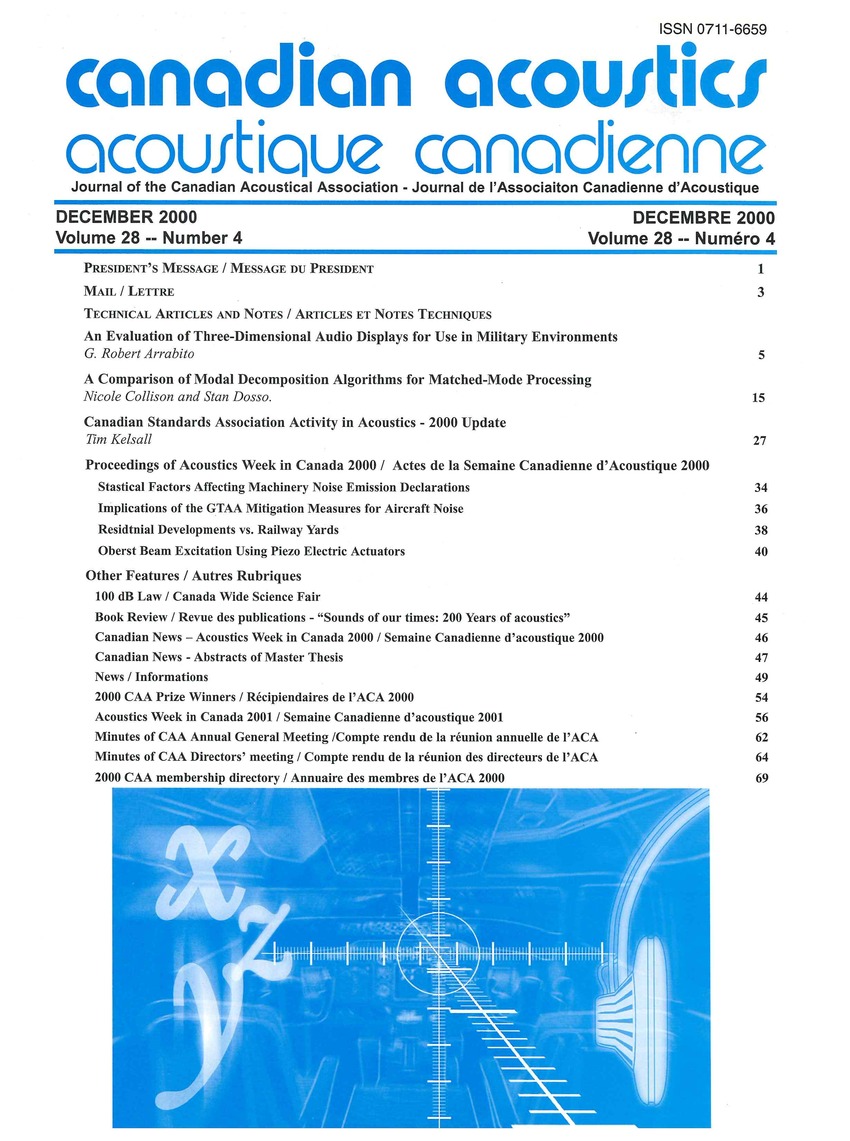A comparison of modal decomposition algorithms for matched-mode processing
Keywords:
Acoustic field measurement, Acoustic fields, Algorithms, Modal analysis, Matched mode processings, Modal decomposition methods, Sensor array configuration, Zeroth order regularized inversionsAbstract
This paper compares a variety of modal decomposition methods used in matched-mode processing (MMP) for ocean acoustic source localization. MMP consists of decomposing far-field acoustic measurements at an array of sensors to obtain the constituent mode excitations (modal decomposition), and then matching these excitations with modelled replica excitations computed for a grid of possible source locations. Modal decomposition can be ill-posed and unstable if the sensor array does not provide an adequate spatial sampling of the acoustic field, so the results of different approaches can vary substantially. Solutions can be characterized by modal resolution and solution covariance; however the ultimate test of the utility of the various methods is how well they perform as part of a MMP source localization algorithm. In this paper, the resolution and variance of the methods are examined using an ideal ocean environment, and MMP results are compared for a series of realistic synthetic test cases, including a variety of noise levels and sensor array configurations. Zeroth order regularized inversion is found to give the best results.Additional Files
Published
How to Cite
Issue
Section
License
Author Licensing Addendum
This Licensing Addendum ("Addendum") is entered into between the undersigned Author(s) and Canadian Acoustics journal published by the Canadian Acoustical Association (hereinafter referred to as the "Publisher"). The Author(s) and the Publisher agree as follows:
-
Retained Rights: The Author(s) retain(s) the following rights:
- The right to reproduce, distribute, and publicly display the Work on the Author's personal website or the website of the Author's institution.
- The right to use the Work in the Author's teaching activities and presentations.
- The right to include the Work in a compilation for the Author's personal use, not for sale.
-
Grant of License: The Author(s) grant(s) to the Publisher a worldwide exclusive license to publish, reproduce, distribute, and display the Work in Canadian Acoustics and any other formats and media deemed appropriate by the Publisher.
-
Attribution: The Publisher agrees to include proper attribution to the Author(s) in all publications and reproductions of the Work.
-
No Conflict: This Addendum is intended to be in harmony with, and not in conflict with, the terms and conditions of the original agreement entered into between the Author(s) and the Publisher.
-
Copyright Clause: Copyright on articles is held by the Author(s). The corresponding Author has the right to grant on behalf of all Authors and does grant on behalf of all Authors, a worldwide exclusive license to the Publisher and its licensees in perpetuity, in all forms, formats, and media (whether known now or created in the future), including but not limited to the rights to publish, reproduce, distribute, display, store, translate, create adaptations, reprints, include within collections, and create summaries, extracts, and/or abstracts of the Contribution.


